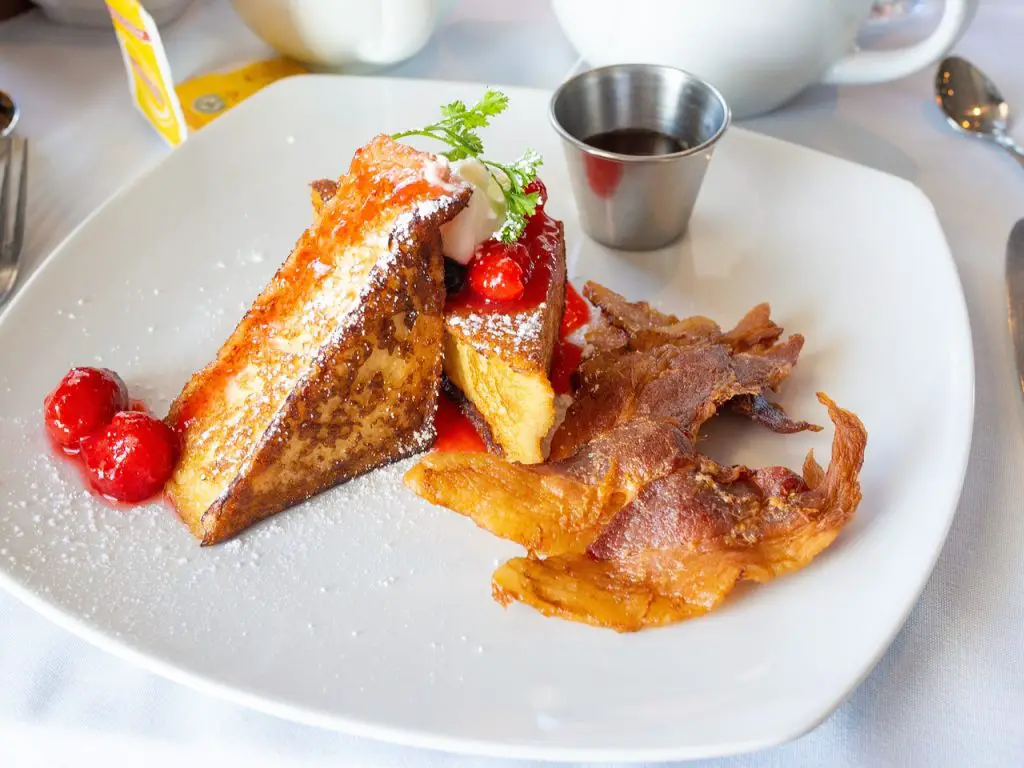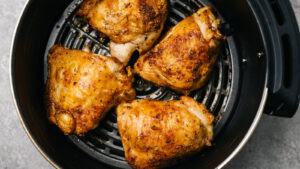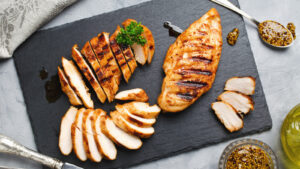Few breakfast dishes can compare to the simple yet satisfying appeal of French toast. This classic morning meal has been delighting taste buds for centuries with its perfect combination of crispy exteriors and custardy interiors. Whether you’re a seasoned home chef or just starting your culinary journey, mastering the art of French toast is a must. In this comprehensive guide, we’ll walk you through the steps to create the perfect French toast every time.
The History of French Toast
Before we dive into the recipe, let’s take a brief look at the history of French toast. Contrary to its name, French toast has roots that extend far beyond France. It has been enjoyed by various cultures throughout history. The dish can be traced back to ancient times when people sought ways to utilize stale bread and prevent food waste. The idea of soaking bread in a mixture of eggs and milk before cooking it over an open flame has been practiced in many cultures, including the Romans and medieval Europeans.
The term “French toast” likely originated in 17th-century England and was later brought to America by early settlers. Today, it has become a beloved breakfast staple worldwide, known by various names such as “eggy bread” in the UK and “Arme Ritter” in Germany.
The Ingredients
To make the perfect French toast, you’ll need a handful of simple ingredients. Here’s what you’ll need:
Bread: Choose good-quality bread like brioche, challah, or French bread. Stale bread works even better as it absorbs the egg mixture without becoming too soggy.
Eggs: Fresh eggs are essential for creating that rich, custardy texture. You’ll typically use about 2-3 eggs per 4 slices of bread.
Milk: Whole milk or a mixture of milk and cream will give your French toast a creamy and decadent taste.
Sweetener: Sugar or maple syrup can add a touch of sweetness to the egg mixture. You can adjust the amount according to your preference.
Vanilla Extract: A dash of vanilla extract enhances the flavor of your French toast.
Cinnamon: A pinch of ground cinnamon adds warmth and depth to the flavor profile.
Butter: For cooking the French toast in the pan and adding a delicious, buttery finish.
The Basic French Toast Recipe
Now, let’s get to the heart of it—the step-by-step guide to making the perfect French toast.
Ingredients:
4 slices of bread
2-3 large eggs
1/2 cup of whole milk
1 tablespoon of sugar or maple syrup (adjust to taste)
1/2 teaspoon of vanilla extract
A pinch of ground cinnamon
Butter for cooking
Toppings (e.g., fresh berries, powdered sugar, maple syrup)
Instructions:
Prepare Your Ingredients:
In a shallow bowl, whisk together the eggs, milk, sugar or maple syrup, vanilla extract, and a pinch of ground cinnamon. Mix until well combined.
Place a non-stick skillet or griddle over medium heat and add a small amount of butter to coat the surface.
Dip and Soak:
Dip each slice of bread into the egg mixture, ensuring it’s fully coated on both sides. Be careful not to soak it for too long to avoid a mushy result.
Cook the French Toast:
Place the soaked bread slices onto the preheated skillet or griddle.
Cook each side for about 2-3 minutes or until they turn golden brown and crispy.
Serve Hot:
Transfer the cooked French toast to a plate.
Add your favorite toppings, such as fresh berries, powdered sugar, or a drizzle of maple syrup.
Serve immediately while it’s hot and crispy.
Variations and Creative Twists
While the classic French toast recipe is a beloved favorite, there are countless ways to put your own spin on this breakfast classic. Here are a few creative variations to consider:
Stuffed French Toast:
Make a pocket in each bread slice and fill it with cream cheese, Nutella, or fruit preserves before dipping and cooking.
Savory French Toast:
Skip the sugar, vanilla, and cinnamon in the egg mixture. Instead, add a pinch of salt and pepper. Top your savory French toast with ingredients like sautéed mushrooms, spinach, and grated cheese.
Fruity Delight:
Top your French toast with slices of banana, strawberries, or caramelized apples for a burst of fruity flavor.
Coconut Crusted:
Dip your bread in a mixture of shredded coconut and egg before cooking for a tropical twist.
Creme Brulee French Toast:
Coat your bread with a sugar glaze before cooking and torch the top for that irresistible caramelized crunch.
Tips for Success
To ensure your French toast turns out perfect every time, consider the following tips:
Use Stale Bread: Stale bread absorbs the egg mixture better without becoming overly soggy.
Don’t Over Soak: Briefly dip the bread into the egg mixture; don’t let it sit too long, or it will become mushy.
Even Heat: Maintain a consistent medium heat when cooking to achieve that ideal golden brown color.
Quality Ingredients: Use fresh eggs, good-quality bread, and whole milk for the best results.
Toppings and Syrups: Get creative with your toppings and syrups to customize your French toast to your liking.
French toast is a breakfast classic that’s stood the test of time for good reason. With its simple yet versatile recipe, it’s easy to see why this dish has remained a cherished morning favorite across the globe. Whether you prefer the classic version or enjoy experimenting with creative variations, French toast has something to offer everyone. So, the next time you’re looking to treat yourself to a delightful morning meal, whip up a batch of homemade French toast and savor the magic of this timeless breakfast dish.
Serving Suggestions
Now that you’ve mastered the art of making French toast, it’s time to explore various serving suggestions that can elevate your breakfast experience. Here are some delightful ideas to enhance your French toast presentation:
Fresh Fruits: Incorporate a colorful array of fresh fruits like strawberries, blueberries, raspberries, and sliced bananas. The vibrant fruits not only add a burst of flavor but also provide a refreshing contrast to the rich, eggy bread.
Whipped Cream: A dollop of whipped cream is a decadent addition that pairs wonderfully with the sweetness of French toast. You can also infuse the whipped cream with a hint of vanilla or a touch of cinnamon for extra flavor.
Nut Butter: Spread a layer of almond butter, peanut butter, or cashew butter between the slices of French toast for a creamy and nutty twist.
Greek Yogurt: Add a spoonful of Greek yogurt for a creamy, tangy element that complements the sweetness of the dish.
Nuts and Seeds: Sprinkle crushed nuts (such as almonds, pecans, or walnuts) or seeds (like chia or flax seeds) on top for added texture and a healthy crunch.
Syrup Varieties: Experiment with different syrups, such as honey, agave nectar, or flavored syrups like caramel or raspberry. Each option can create a unique flavor profile.
Powdered Sugar: Dust a fine layer of powdered sugar over the French toast for an elegant finishing touch.
Savory Additions: If you opt for savory French toast, consider adding ingredients like crispy bacon, sautéed mushrooms, poached eggs, or a drizzle of hollandaise sauce.
Baked French Toast Casserole: Instead of cooking individual slices, you can make a baked French toast casserole by layering the soaked bread in a baking dish, topping it with your preferred ingredients, and baking until golden brown and puffy.
Dietary Considerations
French toast can easily be adapted to suit various dietary preferences and restrictions. Here are some ideas for making French toast that accommodates different dietary needs:
Vegan French Toast: Replace eggs and dairy milk with plant-based alternatives like almond milk, soy milk, or coconut milk. Use mashed bananas, applesauce, or silken tofu as egg replacements. You can also add a pinch of turmeric for a yellow hue reminiscent of traditional French toast.
Gluten-Free French Toast: Opt for gluten-free bread or make your own gluten-free bread using ingredients like almond flour or rice flour. Ensure that all other components, including the toppings, are gluten-free as well.
Low-Sugar French Toast: Reduce the amount of sugar in your egg mixture or use sugar substitutes like stevia or erythritol for a healthier option.
Dairy-Free French Toast: Substitute dairy butter with dairy-free alternatives like coconut oil or vegan butter.
Nut-Free French Toast: If you or your guests have nut allergies, be cautious when adding nuts or nut-based spreads as toppings.
French toast is a delightful breakfast classic that continues to be a favorite for people of all ages. Its simplicity, versatility, and comforting flavors make it a go-to choice for cozy weekend mornings or special occasions. Whether you prefer the traditional recipe or enjoy experimenting with creative variations, the key to a perfect plate of French toast lies in using high-quality ingredients, proper cooking techniques, and the perfect combination of toppings.
So, the next time you’re in the mood for a delicious breakfast that’s both easy to make and immensely satisfying, remember this comprehensive guide to French toast. Whether you’re enjoying it plain or with a variety of toppings, French toast is a timeless dish that’s sure to brighten your day. Bon appétit!




